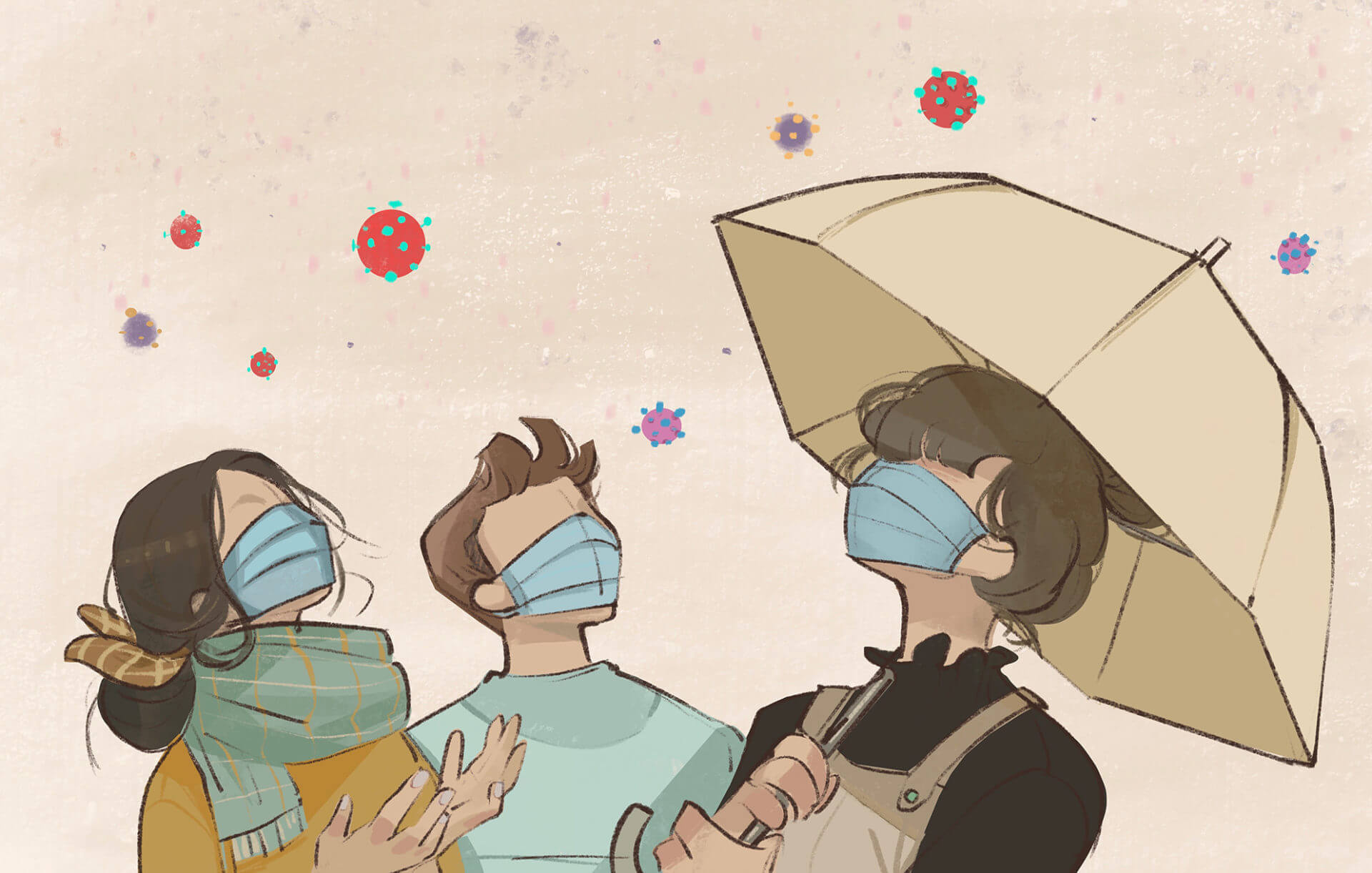Five Changes Inspired by the USC Viterbi COVID World

We lost a lot to the pandemic: loved ones, date nights at our local movie theater, passing the microphone at karaoke and blowing out candles on our birthday cakes. But with all the things that COVID-19 took away, we gained some good things, too. Here are five positive changes at USC Viterbi that continue to shape our long awaited, post-COVID world.
Racial Equity-Minded Action Plan
The pandemic saw racial inequalities breaking to the surface with millions of people taking to the streets to demand change. In June 2020, USC Viterbi began work on the Racial Equity-Minded Action Plan. With a goal to increase pipelines and pathways to attract and retain Black, Latinx and Indigenous students, faculty and staff, the plan is more than a pledge to remove systemic and structural barriers to diversity and inclusion. It is a detailed plan of action originated by faculty, students, staff and administrators seeking to spark cultural transformation in the STEM fields.
A first indicator of the impact of this initiative is the incoming undergraduate class of Fall 2021, which is projected to consist of 13.8% Black, 27.7% Latinx and 25.4% first-generation students, in addition to being gender-balanced (49.6%) for the third year in a row.
Center for Undergraduate Research in Viterbi Engineering (CURVE) Fellowship
Last summer, many USC Viterbi students discovered that internships or jobs they had lined up disappeared almost overnight. Some of these opportunities never came back, so USC Viterbi created a new one: the Center for Undergraduate Research in Viterbi Engineering (CURVE) Fellowship. Open to all USC Viterbi undergraduate students, CURVE has admitted more than 110 students so far.
CURVE embeds younger students in USC Viterbi research labs, pairs them with Ph.D. mentors, and allows them to drive research on topics ranging from climate change to space engineering, self-driving vehicles and socially assistive robotics, to COVID-19 misinformation and using AI for social good. They also receive a $1,250 stipend.
Blended in-person and remote working and learning
Remote work options and flexibility are increasingly important even as more people are getting vaccinated. Through its Distance Education Network (DEN@Viterbi) and other innovations like class meetings in virtual reality, the USC Viterbi community kept the university running from all over the world.
Similarly, the USC Viterbi Human Resources Office and the Office of the Dean have come up with flexible work arrangements under the new Viterbi Workforce Plan. The plan offers three work arrangements — fully remote, hybrid and onsite — to support remote learning as well as the traditional residential campus student life experience that is core to USC Viterbi’s mission, including in-person instruction.
Student Aid Fund
With many students unable to return home during the lockdown, USC Viterbi established the Student Aid Fund to provide financial support to engineering students who had difficulty remaining enrolled. The amount raised was matched with a gift from University Trustee Ming Hsieh, B.S. EE ’83, M.S. EE ’84, amounting to $241,000 raised to date. The funds helped 365 students with short-term housing, food, internet access, transportation, research on campus, lost wages and supplies.
“Although the fund was initiated to help our students cover short-term food and housing costs, we hope to continue these efforts alongside USC’s Basic Needs office to ensure the physical, emotional and academic well-being of USC students,” said Sheryl Koutsis, director of academic services at the USC Viterbi Office of Admission and Student Affairs.
More more information on the USC Viterbi Student Aid Fund: please contact Jane Ong, senior associate director of development for the USC Viterbi School of Engineering at: jane.ong@usc.edu / 213.821.2921.
Viterbi Live and Pandemic Lecture Series
The Viterbi vs. Pandemics lecture series, created by Dean Yannis C. Yortsos, addressed epidemics in a comprehensive way from the perspective of faculty on the frontlines of researching and developing new methods to predict, analyze and combat COVID-19. Open to the USC community and beyond, the 11 lectures ranged from the fluid dynamics of contagion, bioengineering and vaccine development to contact tracing and combating misinformation.
Meanwhile, USC Viterbi’s Alumni Relations office hosted a series of Viterbi Live events bringing together students, alumni and staff through a series of faculty, research, leadership and social events.
In partnership with USC Viterbi’s Marketing and Communications Office, Viterbi Live highlighted the remarkable work of the Trojan Family to adapt to the “new normal,” such as Professor S.K. Gupta’s “Handling the PPE Shortage Through Innovation, Creativity, and Maker Movement;” former NASA astronaut and Professor of Astronautical Engineering Garrett Reisman’s session, “Working Remotely: Lessons I Learned From Space;” and Professor Andrea Armani’s “Innovative ‘DIY’ PPE Disinfectant Methods.”
These global Viterbi Live “E” Day events culminated in a lecture from the school’s namesake, Andrew Viterbi, Ph.D. ’62, speaking to more than a thousand people on “The Mathematics of Epidemics: A Century-Long Saga.”
As the online format evolves from large events to intimate salons, USC Viterbi will continue to bring the engineering community together around the open sharing of knowledge and experience to engineer a better world for all humanity.



